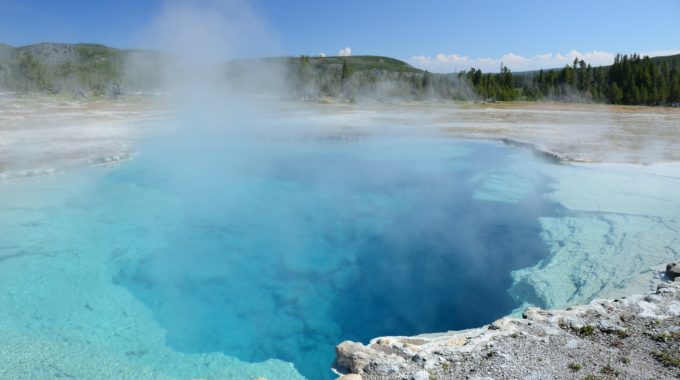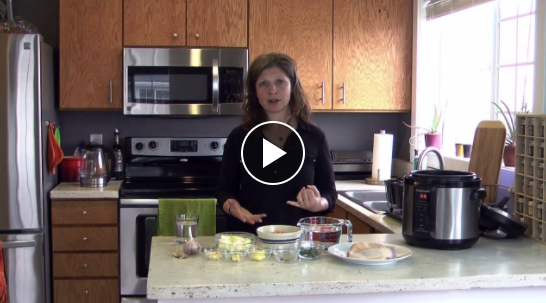
How to Supercharge Your Hot Springs Health Benefits
Dr. Bacon here. You want to know one of my favorite parts about living in Bozeman?
Hot springs.
It’s hard to beat the healing hot water coming up from the earth — and it’s available for soaking only a short drive away in several directions. I try to visit local hot springs multiple times each and every week. The thing I really like about them is that the benefits go so much deeper than just feeling good. I love that when I soak, I’m not only able to relax more deeply, but my muscle aches melt away and my skin becomes so much softer.
Now, I know the fact that hot springs are fantastic is probably not news to you. However, in this article I’m going to give you a way to step up your hot springs experience from fantastic to phenomenal.
First, I want to tell you a little bit about why hot springs have so many health benefits in the first place. In part, it has to do with the actual properties of water. Water accomplishes things like hydrating your skin, removing stress from your joints, and soothing you by exerting pressure on your body. The heat of the water also plays a crucial role by relaxing your muscles, increasing your circulation, and relieving pain.
But the most unique part of hot springs water that gives them so many great health benefits — benefits you can’t get from just soaking at home in a bathtub — is the high mineral content.
Here are some of the most common minerals and the health benefits they provide:
- Calcium, magnesium, potassium, and sodium are relaxing to the muscles.
- Magnesium and bicarbonate are calming to the nervous system.
- Silica, sulfate, and potassium are soothing to the skin.
- Sulfate promotes health hair and nails.
- Bicarbonate improves circulation.
As fantastic as it is to soak in these restorative waters, I promised I was going to share how to turbo charge these benefits and get several other bonuses from your hot springs trips.
So what is my big secret?
Contrast hydrotherapy.
Contrast hydrotherapy is a fancy way of saying “going back and forth between hot and cold”. The temperature contrast enhances the effects you already get from the hot. You also get a boost in your immune system, improved healing of damaged tissues, tonification of your tissues, and even more improved circulation.
Beyond these specific benefits, I can tell you that when I do contrast hydrotherapy, I feel noticeably more energized and invigorated. I can really feel the positive effects on my body. I don’t know how to say it any different: I just feel undeniably healthier.
So who is this therapy good for and who should avoid it? Determining who can use contrast hydrotherapy is easy – basically if you’re interested in getting the benefits, then it’s something worth trying out.
But first it’s important to make sure you’re not someone who should avoid contrast hydrotherapy. Folks who fall in this category are:
- People with heart or vascular problems such as high blood pressure, poor circulation, blood clots, phlebitis, vascular insufficiency or stasis, or Raynaud’s. Depending on the severity of your condition, it may or may not be safe to do contrast hydrotherapy. For this reason, consult you doctor first.
- Diabetics who are losing feeling in their extremities. This is because you could get burned or get too cold. What you can do is have someone else test the hot and cold waters for you before you get in and do a shorter time in both to make sure you don’t hurt yourself.
- People with asthma can get an asthma attack from the shock of the cold water. Instead, substitute lukewarm water for the cold.
- Pregnant women should avoid this type of therapy while pregnant.
Assuming you are someone who can do contrast therapy, it’s good to be aware of some possible sensations that can happen to some people. These include lightheadedness, dizziness, nausea, feeling chilled, and feelings of pins and needles with changing temperature. If you feel any of these sensations, try decreasing the number of cycles you do and/or decreasing the level of temperature contrast between the cold and hot water. If these changes do not resolve your symptoms, consult your doctor before continuing.
So how can you get the most out of contrast hydrotherapy? What I recommend to my patients is to start in the hot water. Get your body warmed up – maybe even to the point of breaking a sweat if you can handle it.
Once you’re good and warm, move to the cold water. You can certainly lower yourself in slowly. However I highly recommend just getting it over with and dunking yourself. You don’t have to immerse your head, but makes sure you get low enough in the water to cover your shoulders. A good amount of time in the cold water is 30 seconds. Next, move back to the hot water. I recommend 3 minutes for the hot round.
Repeat this process 2 more times. Any easy way to remember is 3 minutes hot, 30 second cold, 3 times. You can vary the times to your liking, but keep in mind it is important is to end on cold. That’s because it’s better for your circulation to end with less dilated blood vessels.
Whether you have an injury and are looking to improve healing, or you could use a boost in your immune system to ward off illness, or you just want to live a healthier life, contrast hydrotherapy is an easy way to do all of this and more. I hope the next time you are soaking in a hot pool, you’ll take the plunge to better health by including some time in the cold pool.
Take care and be well,
Dr. Bacon




This Post Has 0 Comments